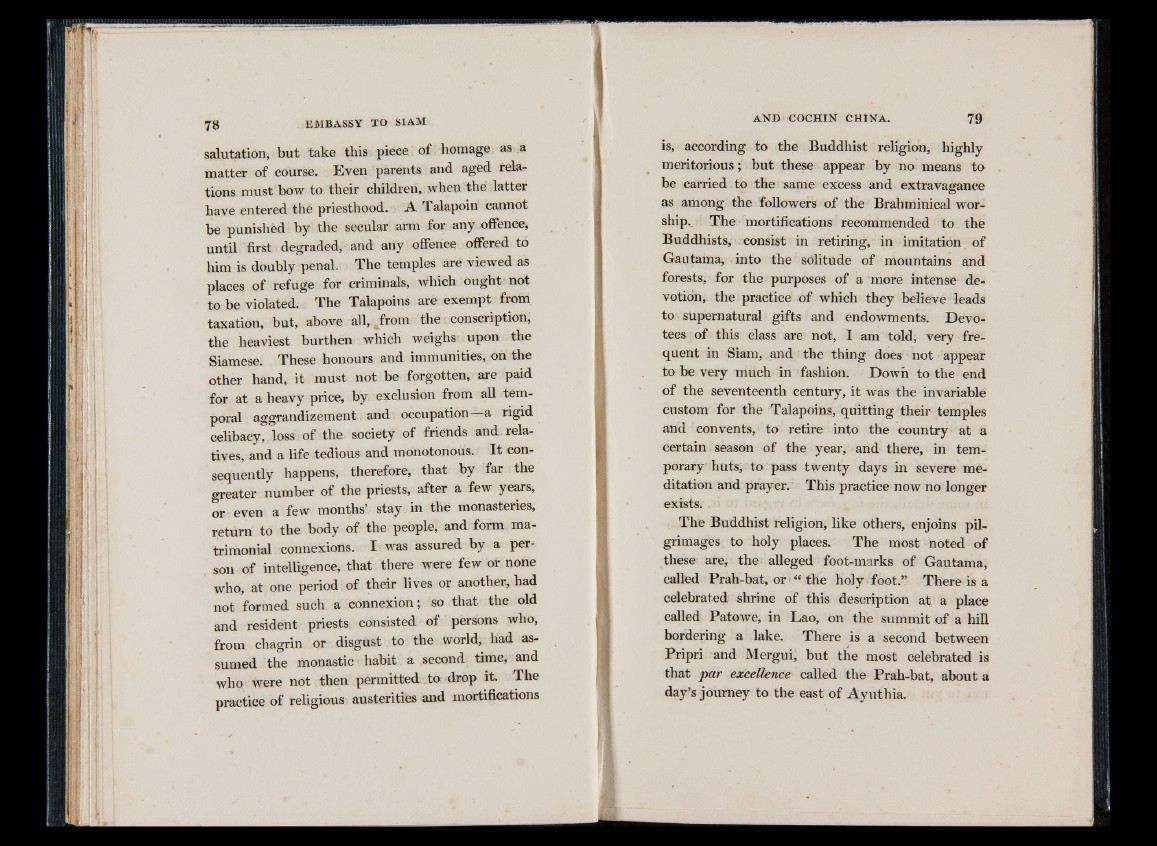
salutation, but take this piece of homage as a
matter of course. Even parents and aged relations
must bow to their children, when the latter
have entered the priesthood. A Talapoin cannot
be punished by the secular arm for any offence,
until first degraded, and any offence offered to
him is doubly penal. The temples are viewed as
places of refuge for criminals, which ought not
to be violated. The Talapoins are exempt from
taxation, but, above all, fcfrom the conscription,
the heaviest burthen which weighs upon the
Siamese. These honours and immunities, on the
other hand, it must not be forgotten, are paid
for at a heavy price, by exclusion from all temporal
aggrandizement and occupation a rigid
celibacy, loss of the society of friends and relatives,
and a life tedious and monotonous. I t consequently
happens, therefore, that by far the
greater number of the priests, after a few years,
or even a few months’ stay in the monasteries,
return to the body of the people, and form matrimonial
connexions. I was assured by a person
of intelligence, that there were few or none
who, at one period of their lives or another, had
not formed such a connexion; so that the old
and resident priests consisted of persons who,
from chagrin or disgust to the world, had assumed
the monastic habit a second time, and
who were not then permitted to drop it. The
practice of religious austerities and mortifications
is, according to the Buddhist religion, highly
meritorious; but these appear by no means to
be carried to the same excess and extravagance
as among the followers of the Brahminical worship.
The mortifications recommended to the
Buddhists, consist in retiring, in imitation of
Gautama, into the solitude of mountains and
forests, for the purposes of a more intense devotion,
the practice of which they believe leads
to supernatural gifts and endowments. Devotees
of this class are not, I am told, very frequent
in Siam, and the thing does • not appear
to be very much in fashion. Down to the end
of the seventeenth century, it was the invariable
custom for the Talapoins, quitting their temples
and convents, to retire into the country at a
certain season of the year, and there, in temporary
huts, to pass twenty days in severe meditation
and prayer. This practice now no longer
exists.
The Buddhist religion, like others, enjoins pilgrimages
to holy places. The most noted of
these are, the alleged foot-marks of Gautama,
called Prah-bat, or*“ the holy foot.” There is a
celebrated shrine of this description at a place
called Patowe, in Lao, on the summit of a hill
bordering a lake. There is a second between
Pripri and Mergui, but the most celebrated is
that par excellence called the Prah-bat, about a
day’s journey to the east of Ayuthia.